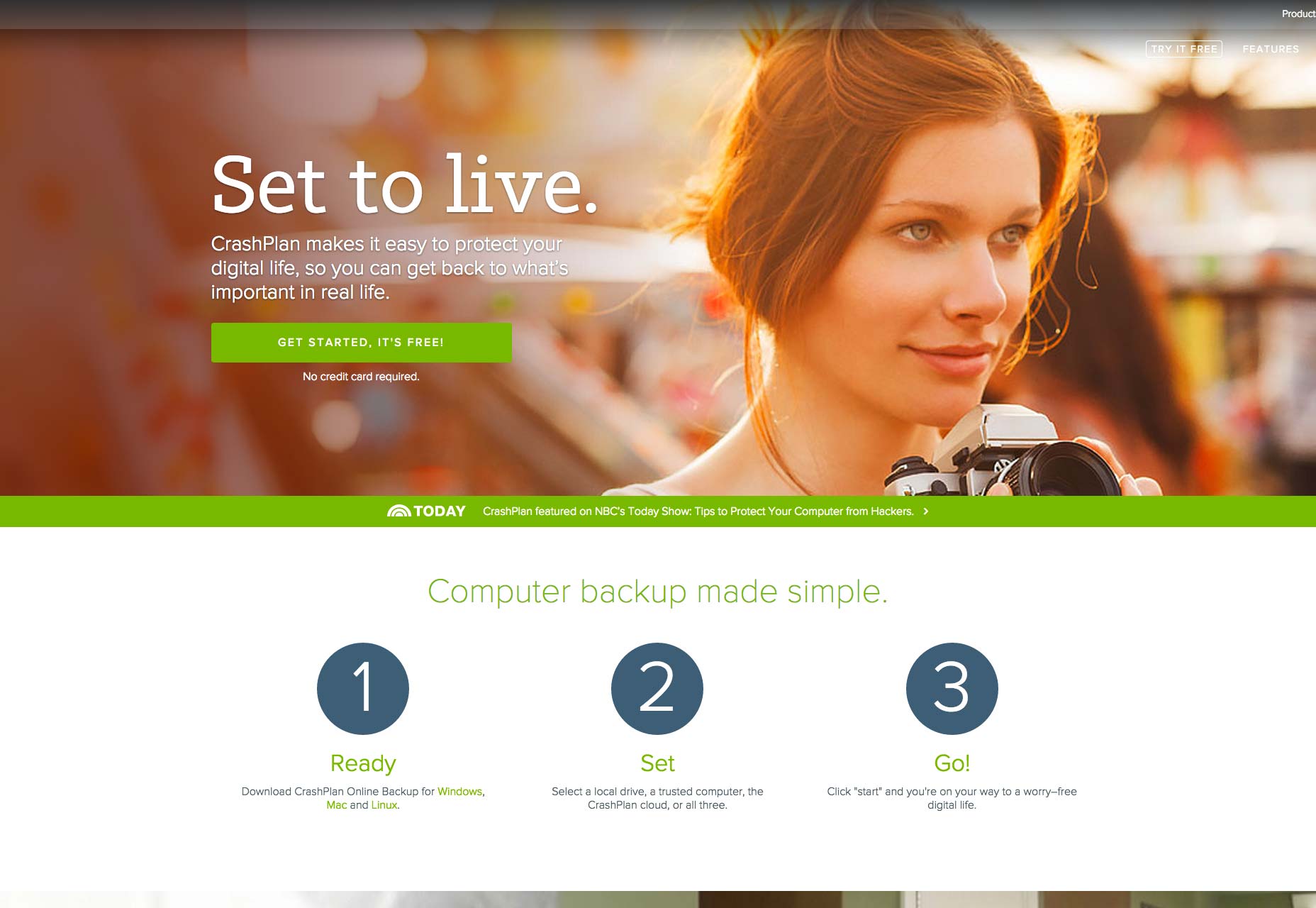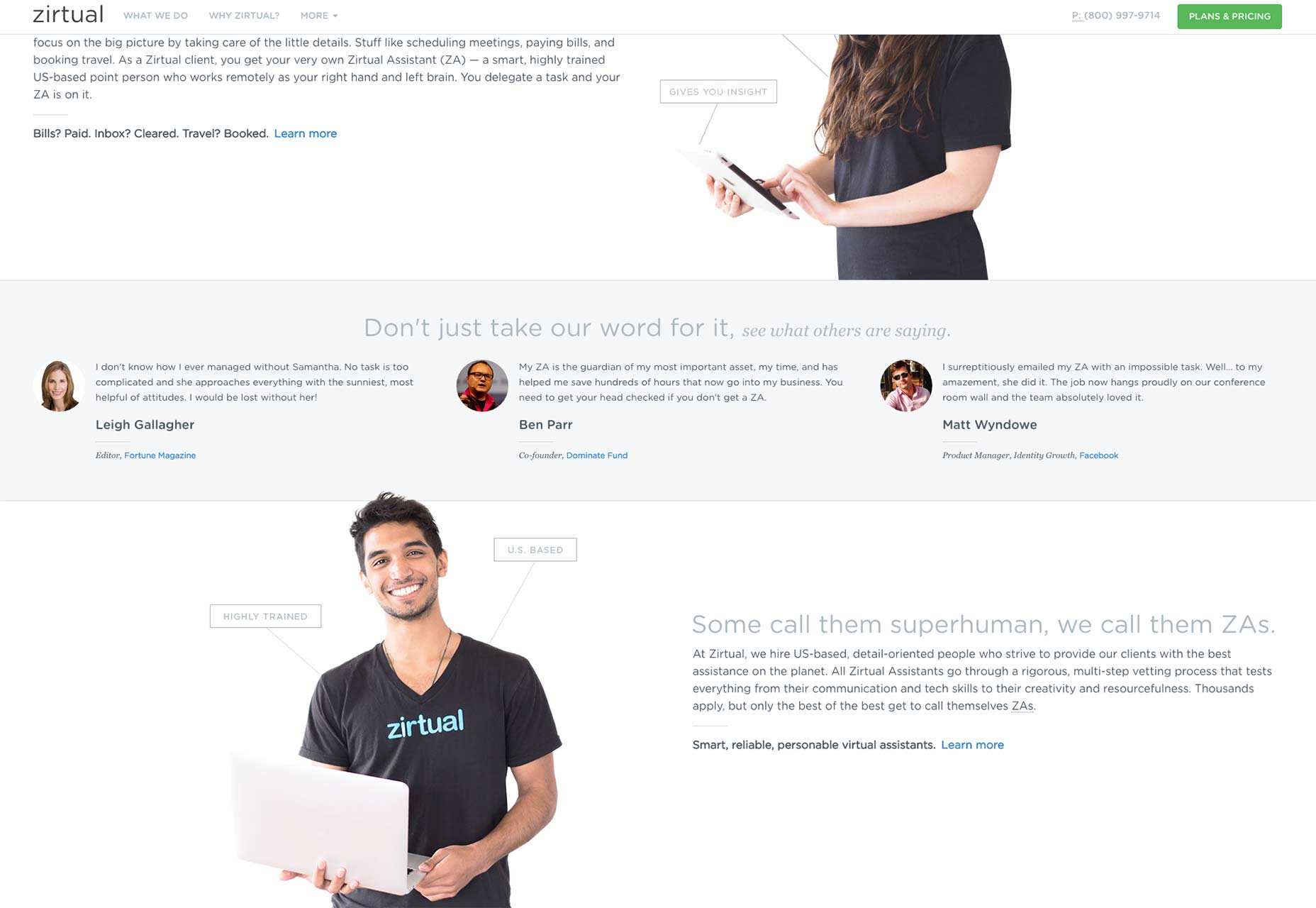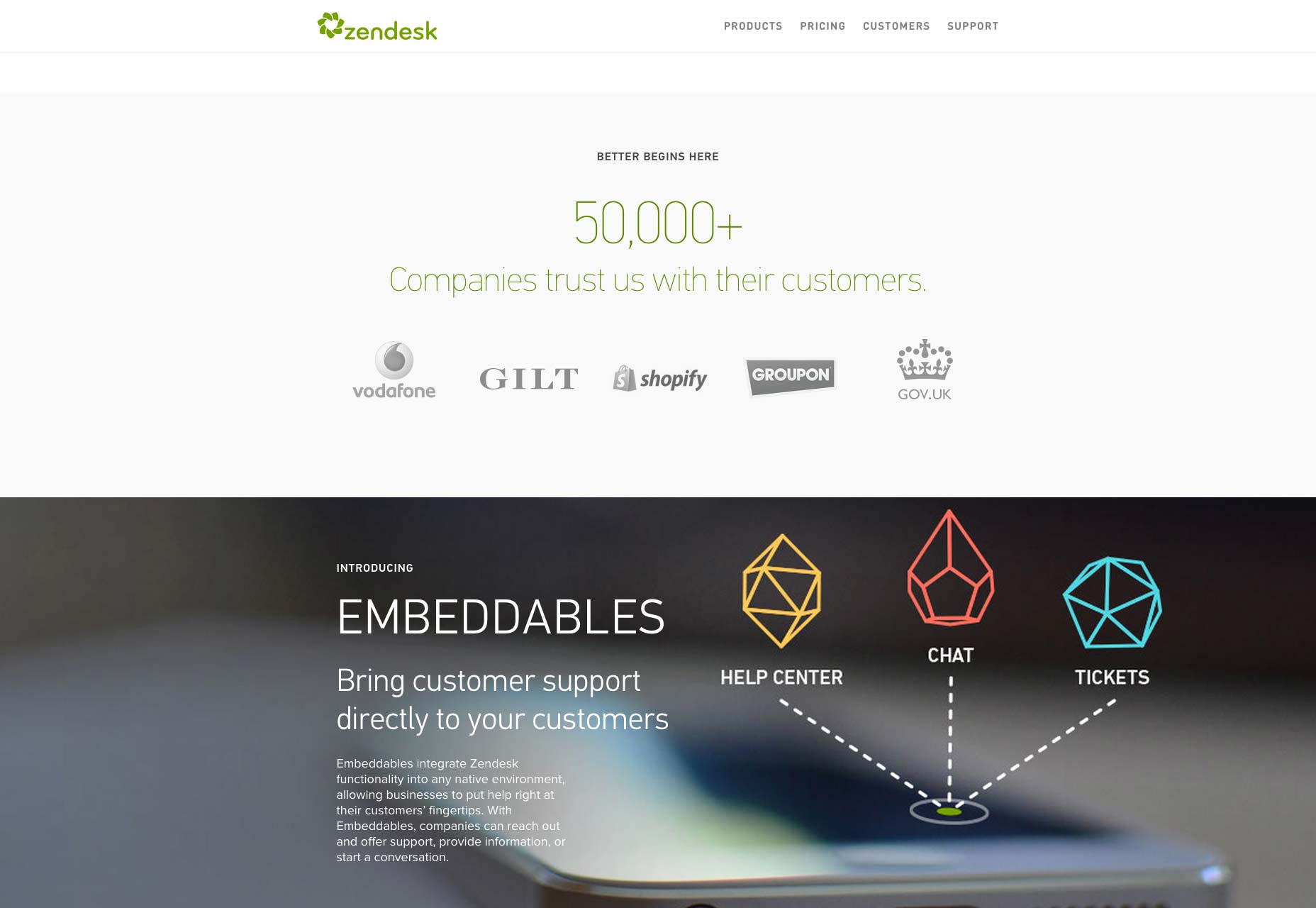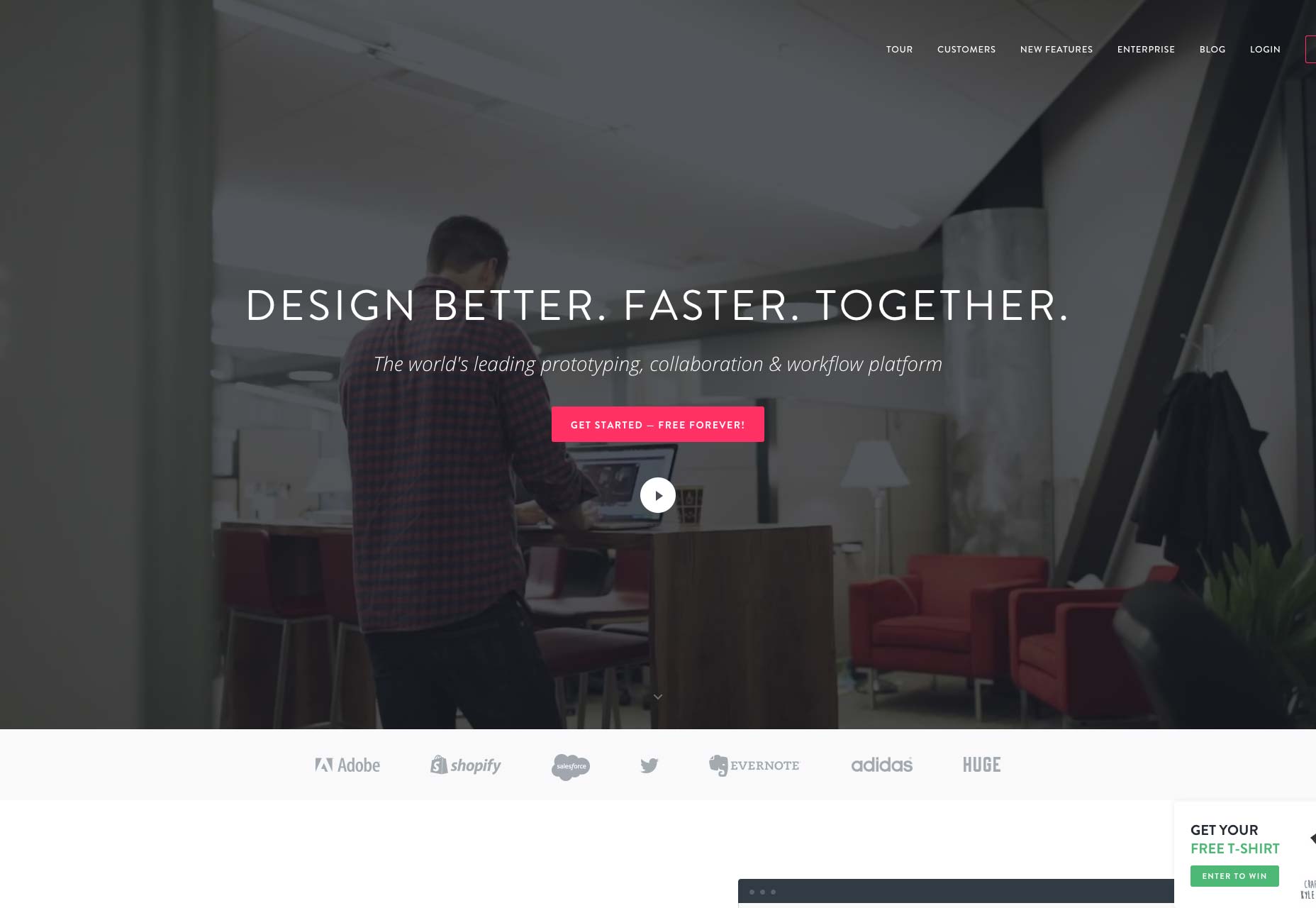
1) Identify your ideal customer
The first step in creating a profitable website might not involve turning on a computer at all. Say whaaaat? Instead take a good look at your best clients, if you’re building your website yourself; or in the case of the digital agency, study your clients’ best client. Who is that ideal customer? How do you define this person beyond the typical gender and age targeting? This is a time to get really granular, focusing on specifics like the target client’s interests, how they spend their time, where they hang out and what is most important to them. This might be a shift in how you currently think about targeting. Rather than trying to broaden the appeal to as many people as could possibly be interested in the products or services you offer, try narrowing instead so you can really craft a message that resonates. Trust me, if you do that well, the rest will come. Looking around the coffee shop, I would imagine by the cast and characters currently perched at neighboring tables that they targeted someone slightly different from Jared or I, but nevertheless, here we are for the umpteenth time this month. And it’s only the 8th. Church Media does an outstanding job of targeting a niche clientele. It may be stretch of the imagination to believe that there are that many churches and ministries with a healthy budget, and leadership that both values a strong web presence and has a good eye for design. It may seem foolish to narrow one’s clientele to faith-based organizations with a base project starting at $7500; but one look at their project page is proof that targeting works.
Furthermore, they’ve developed their niche well enough that they can be choosy about which projects they take on and only develop ones that they enjoy and build their portfolio. And if you target, they will come! While the majority of projects have a religious origin, there are some featured websites that are outside of their target niche. Authors and charities are two great examples of non-churches that connected with Church Media’s message even though they aren’t in the specific niche. They found something in the design and message that makes them believe that Church Media is the best agency for the job, even if they’re on the fringes of being a target customer.
Church Media does an outstanding job of targeting a niche clientele. It may be stretch of the imagination to believe that there are that many churches and ministries with a healthy budget, and leadership that both values a strong web presence and has a good eye for design. It may seem foolish to narrow one’s clientele to faith-based organizations with a base project starting at $7500; but one look at their project page is proof that targeting works.
Furthermore, they’ve developed their niche well enough that they can be choosy about which projects they take on and only develop ones that they enjoy and build their portfolio. And if you target, they will come! While the majority of projects have a religious origin, there are some featured websites that are outside of their target niche. Authors and charities are two great examples of non-churches that connected with Church Media’s message even though they aren’t in the specific niche. They found something in the design and message that makes them believe that Church Media is the best agency for the job, even if they’re on the fringes of being a target customer.
2) Refine your value proposition
Now that you’ve identified your ideal client, it’s time to revisit (or for some, create...) your value proposition. Your value proposition is a statement about what sets your products or services apart from your competition. Why should your ideal client buy from you? Identify what is unique and special; that thing that will make your ideal client’s life better by clicking to purchase. What is it about your business that makes your product or service a “must buy” for this person? CrashPlan’s headline and sub-headline are a perfect example of honing in on the benefits and depicting why the reader needs this service. They could have written about their 448-bit encryption, support for any size file and military grade security, but they didn’t. And that’s a good thing. Instead, those features are all available to digest later in the site on the appropriately named Features page; they have no business as the number one thing that a browsing consumer reads.
Chant this out loud: the goals of the headline and sub-headline are to make an instant connection. That’s their job: to connect and excite. They have no other job; so don’t start adding roles like explain, emphasize or demonstrate. Save those jobs for copy on later pages just like CrashPlan did. They honed in on the #1 most important thing that makes their client’s life better to create their value proposition: getting back to what they enjoy in life thanks to the knowledge that they’re protected. People connect with “why”, not “what”.
It’s important to invest the time to really craft your value proposition. Establishing your primary selling point in one clear, concise sentence that will be featured prominently on your homepage takes practice. Beware of using industry lingo that might make you sound like an expert but doesn’t resonate with your client. Instead, consider what truly matters the most to your customer and focus on that one point to define your value proposition.
CrashPlan’s headline and sub-headline are a perfect example of honing in on the benefits and depicting why the reader needs this service. They could have written about their 448-bit encryption, support for any size file and military grade security, but they didn’t. And that’s a good thing. Instead, those features are all available to digest later in the site on the appropriately named Features page; they have no business as the number one thing that a browsing consumer reads.
Chant this out loud: the goals of the headline and sub-headline are to make an instant connection. That’s their job: to connect and excite. They have no other job; so don’t start adding roles like explain, emphasize or demonstrate. Save those jobs for copy on later pages just like CrashPlan did. They honed in on the #1 most important thing that makes their client’s life better to create their value proposition: getting back to what they enjoy in life thanks to the knowledge that they’re protected. People connect with “why”, not “what”.
It’s important to invest the time to really craft your value proposition. Establishing your primary selling point in one clear, concise sentence that will be featured prominently on your homepage takes practice. Beware of using industry lingo that might make you sound like an expert but doesn’t resonate with your client. Instead, consider what truly matters the most to your customer and focus on that one point to define your value proposition.
3) Ease their pain
There’s another angle to consider when you begin working on headlines and web copy that’s also based on what matters most to your clients: figuring out their pain points. What is it that frustrates your client? Is there a problem that your product or service solves for your ideal client? Identify the pain point and begin crafting a headline that speaks to it. The idea is to once again make that connection with the customer. You understand. You’ve been there yourself. That’s why you created this business: in order to fill a gap out there in the world (well, that, and to pay the bills). So speak to the pain that they’re experiencing in one simple statement. No need to start line listing the ways that your business solves these problems because there are better places for that kind of information, such as the page where you highlight the most important features of your product or service. Take a look at FreshBooks’ homepage. They’re easing pain left and right! The target customer arrives on their website and thinks, “That’s me!” They nailed it and then went even further supporting their value proposition with more pain easing in the next section of their website by highlighting the benefits of their product: extra free time, making more money and getting paid faster.
Take a look at FreshBooks’ homepage. They’re easing pain left and right! The target customer arrives on their website and thinks, “That’s me!” They nailed it and then went even further supporting their value proposition with more pain easing in the next section of their website by highlighting the benefits of their product: extra free time, making more money and getting paid faster.
4) Minimize their objections
As a marketing student a few (or many...whatever) years ago, I remember the first time a professor explained Cognitive Dissonance and its consideration in marketing practices. My professor asked us to recall a time that we made a large purchase and think about how we felt leading up to and after the purchase. What did the little voice in our rational minds tell us about that purchase? Chances are that we experienced some cognitive dissonance when we felt guilt about the purchase or wished we’d bought an alternative. Maybe we rationalized the purchase by telling ourselves it was high quality and worth the price. Or perhaps we did some research that supported the idea that we needed to make this purchase. This is the kind of stress that can be identified when customers find your product or service, read about it, perhaps even put it in the shopping cart and then BAM! They close their browser and do not return. It happens all the time and is a perfectly normal reaction when faced with parting with hard earned cash. But we don’t have to just sit there and let it happen. Instead, think about the objections that your ideal customer might have when completing the purchase and get to work. Minimizing objections isn’t trickery or even an involved sales pitch. You’re likely so unpracticed at sales that your clients could probably smell a sales pitch a mile away, so instead stick to being a good and honest you. Be clear about how easy and risk free it is to move forward with your product or service and display this information prominently throughout your website. Scribd provides a great model for minimizing objections by setting clear expectations for utilizing their service. The call-to-action boldly and brightly informs subscribers that they can try the service for free and have 14 days to decide if they like it. It’s clear in the sub-headline that $8.99/month is what you’ll be charged after your free trial and that they can read on any device. The potential customer knows at first glance what to expect when they click through to sign up. Clarity like this instills confidence in the customer to fill out the credit card fields rather than drop off once the site begins asking for personal information.
Scribd provides a great model for minimizing objections by setting clear expectations for utilizing their service. The call-to-action boldly and brightly informs subscribers that they can try the service for free and have 14 days to decide if they like it. It’s clear in the sub-headline that $8.99/month is what you’ll be charged after your free trial and that they can read on any device. The potential customer knows at first glance what to expect when they click through to sign up. Clarity like this instills confidence in the customer to fill out the credit card fields rather than drop off once the site begins asking for personal information.
5) Social proof is gold
The best new clients are often referrals from your favorite existing clients. Many successful businesses are built on word-of-mouth, leveraging their happy customers’ experiences to increase leads via colleagues, friends and acquaintances. By the time you’ve done business with your sister-in-law’s cousin’s neighbor, you may be wondering how to take referral networking to the next level. There’s an easier way, right? Integrating social proof into your website is key to building credibility and transcends the social circle of your clients. Testimonials are an easy way to get started with integrating social proof into online content. Asking a few happy clients for the same quote that they’re already dishing out to people they know is a no-brainer; and helps to reinforce the notion that your products and services are worth their investment. If Sally, Jack, and Anne are all willing to rave about your business then it must be good for Mark too, right?! Include photos when you can, such as a head-shot of your happy client, or, if possible, one where your customer is interacting with your product. Also consider including other information that may help build the connection for your product or service (i.e. a local service company may indicate that Jack is from La Crosse, WI, or a wrinkle cream vendor could display Anne’s age as proof that she looks young for her years). Zirtual features their testimonials high up on their homepage and includes their clients’ company and title as proof that they provide good service. Note that Zirtual clearly asked their clients to talk about how utilizing their service has impacted their life (benefits, benefits, benefits!) so that the potential customer makes that instant connection to their own situation.
Also consider including other information that may help build the connection for your product or service (i.e. a local service company may indicate that Jack is from La Crosse, WI, or a wrinkle cream vendor could display Anne’s age as proof that she looks young for her years). Zirtual features their testimonials high up on their homepage and includes their clients’ company and title as proof that they provide good service. Note that Zirtual clearly asked their clients to talk about how utilizing their service has impacted their life (benefits, benefits, benefits!) so that the potential customer makes that instant connection to their own situation.
 Have you gotten some good press about your service? Do you work with some notable names? Add these monikers to your website as examples of well-known companies that trust you or reputable sources that think you’re worth reading about just like Zendesk has done. This kind of social proof can be invaluable. I mean, really, if Google, New York Times, or Wired think you’re awesome, who am I to disagree?
Have you gotten some good press about your service? Do you work with some notable names? Add these monikers to your website as examples of well-known companies that trust you or reputable sources that think you’re worth reading about just like Zendesk has done. This kind of social proof can be invaluable. I mean, really, if Google, New York Times, or Wired think you’re awesome, who am I to disagree?
 Another element of social proof is to utilize some data points in your business. If you’ve sold 4 million bottles of poo pourri, why not tell people about it? Creating a statement that encourages your ideal client to join the thousands of satisfied customers in their shoes helps to reinforce the message that they will be happy with your product or service, too. InVision understands the value of this tactic.
Another element of social proof is to utilize some data points in your business. If you’ve sold 4 million bottles of poo pourri, why not tell people about it? Creating a statement that encourages your ideal client to join the thousands of satisfied customers in their shoes helps to reinforce the message that they will be happy with your product or service, too. InVision understands the value of this tactic.
Social proof off your website is just as important, if not more important than the proof you include on your website. Just ask the researchers at BrightLocal who found these results through a series of consumer surveys about the influence of online reviews. Their 2013 survey concluded that 79% of consumers trust online reviews as much as a recommendation from someone they know personally. It’s critical to monitor your online reviews and work towards gaining positive word-of-mouth. Good thing there are a few things you can do to be proactive with reviews. The best way to get started garnering positive reviews is to... ask! When a client tells you how great of service they received or how pleased they are with your product, ask them to submit a review on Google. If you receive an email from a satisfied customer, respond with how pleased you are to hear this and include a link to your Facebook page asking if they wouldn’t mind sharing their review. Be assertive when asking for good reviews and it can make a huge impact on your social proof.
















